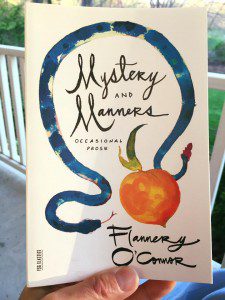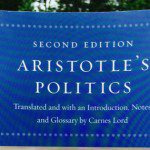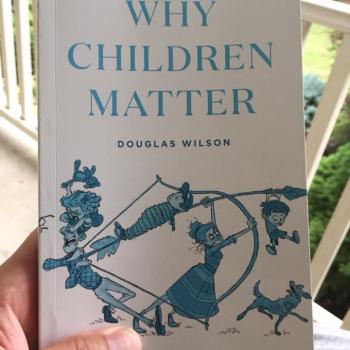I’ve been reading essays from Flannery O’Connor’s occasional prose. Since I write fiction, I’m interested in hearing what other authors of fiction have to say about the craft. The collection entitled Mystery and Manners includes an essay entitled, “The Nature and Aim of Fiction”. I came across this passage and started underlining:
The kind of vision the fiction writer needs to have, or to develop, in order to increase the meaning of his story is called anagogical vision, and that is the kind of vision that is able to see different levels of reality in one image or situation. The medieval commentators on Scripture found three kinds of meaning in the literal level of the sacred text: one they called allegorical, in which one fact pointed to another; one they called tropological, or moral, which had to do with what should be done; and one they called anagogical, which had to do with the Divine life and our participation in it. Although this was the method applied to exegesis, it was also an attitude toward all of creation, and a way of reading nature which included most possibilities, and I think it is this enlarged view of the human scene that the fiction writer has to cultivate if he is ever going to write stories that have any chance of becoming a permanent part of our literature.
O’Connor wrote anagogically, and that is why we still read her stories today.
This also the case with C. S. Lewis, J. R. R. Tolkien, and G. K. Chesterton. It is what makes Milton’s Paradise Lost, and Dante’s Divine Comedy what they are. And I even think this is true for the more subtle and seemingly more realistic work of Marilyn Robinson and Wendell Berry. It is not true of John Bunyan’s Pilgrim’s Progress. Bunyan worked solely in the allegorical mode. And for the slew of writers you can find in the typical Christian bookstore, they’re working almost exclusively tropologically. For those writers fiction is just a way to make moralism more palatable.
This explains why so much religious fiction is flat; it works at only one level. This is also the case for much of the preaching in our churches. It’s flat, too.
When I was in seminary professors of hermeneutics liked it that way. The flatter the better. They did their best to beat any inclination to think anagogically right out of us. They made a mockery of the medievals and sometimes would state plainly that the only method for right-thinking people when it comes to scripture is the historical-critical method. Anything else opens the door to fantastical and subjective interpretations.
This is sort of funny as I think about it today, because the result of the historical-critical approach has been to turn us inward when it comes to finding meaning in our lives.
 O’Connor makes a connection between the anagogical method of interpretation and the world outside our heads. She said, if it works for scripture, it works for the world. I think she’d agree that in fact it is really the other way around. Since it is true of the world, it must be true of scripture. And since that’s the case, it can also be true of the stories we write.
O’Connor makes a connection between the anagogical method of interpretation and the world outside our heads. She said, if it works for scripture, it works for the world. I think she’d agree that in fact it is really the other way around. Since it is true of the world, it must be true of scripture. And since that’s the case, it can also be true of the stories we write.
Here’s how it works: since the world is a creation, not merely a brute fact, we can legitimately look for meaning beneath its surface. And since we can write our own stories this way, we can infer that the reason we can do so is because God has already done so with his creation. Just as anagogical meaning exists both in our stories and in the head of the reader, we can say that some readers understand the stories at two levels, while other readers can only see the surface. Likewise with the world. There are historical facts that make a contingent historical sense, while at the same moment point beyond themselves to meaning not fully contained by them.
People who fear this approach because of its “subjectivity” miss its external dimension. Meanings are reflected in the mind, but they don’t originate there. They are perceived through the facts.
Paradoxically, the triumph of the historical-critical method has made meaning largely subjective for most Christians. The past and parousia are clear through scripture, but the present is inscrutable. It is a flow of contingencies. Those who look for meaning in it usually turn to their feelings hoping to find the Spirit there.
Liberals tend to side with Schleiermacher, seeing religion as mainly a matter of sentiment. It begins in us and flows outward. Although this is usually balanced with justice-talk in liberal churches, justice isn’t concerned with the meanings of things. Instead, justice is concerned with making sure people are free to make their own meanings. For “conservatives” there is a stronger sense of personal responsibility for living meaningfully. But the meaning is bound to God’s law. But beyond this, the world remains a meaningless place.
The problem as I see it is this isn’t scriptural. The Apostle Paul tells us in Ephesians 5, for instance, that the marriage of a man and a woman is a real way points beyond itself. “One flesh” he says isn’t just about sex. It can’t even be reduced to a common life, or a commonwealth. It is a mystery–something that reflects something at the very core of God’s purposes.
This is largely why we don’t get the meaning of marriage these days. We think it can be reduced to either sentiment divorced from physical considerations (hey, it’s about love right?) or it is just obedience to a divine law that needs no further justification. (The bible says it. I believe it. That settles it. Amen.)
But according to the Apostle Paul–there is another level of meaning here. Paul interpreted the world, and the scriptures, anagogically.













